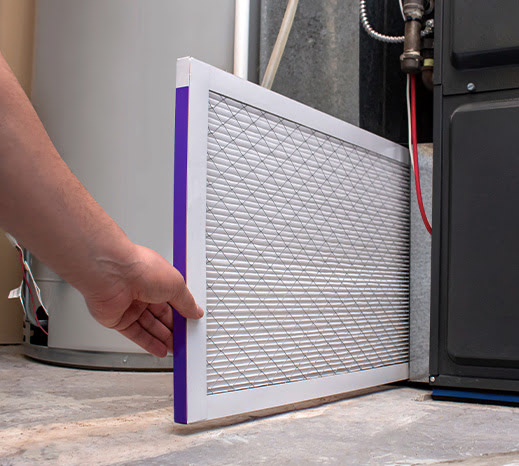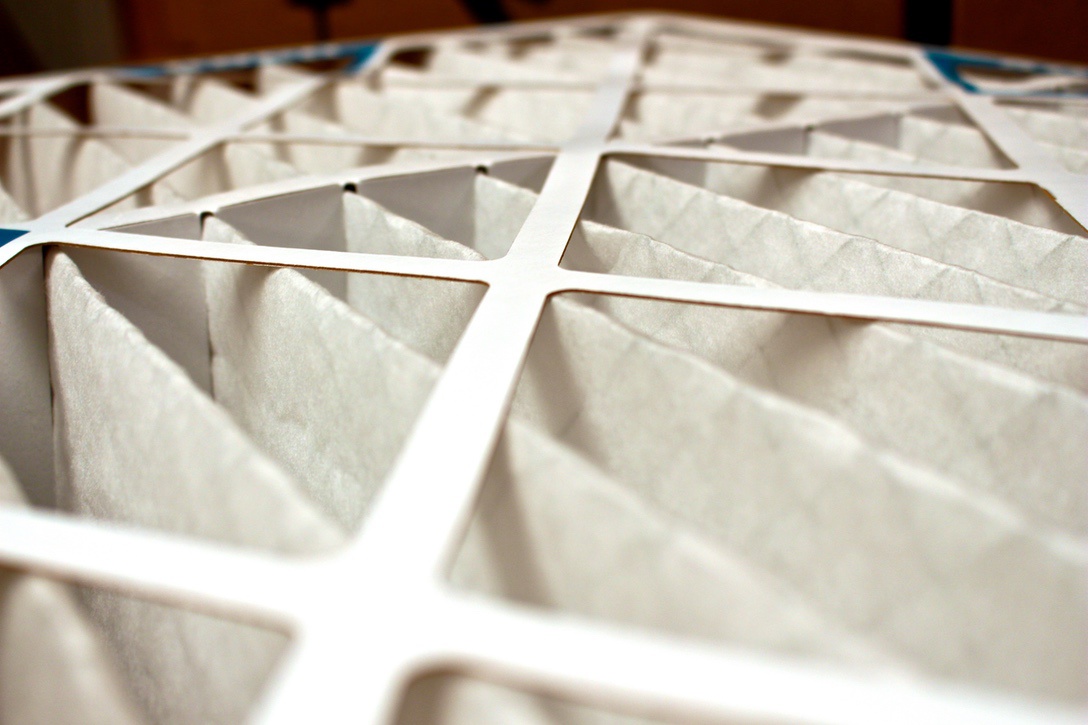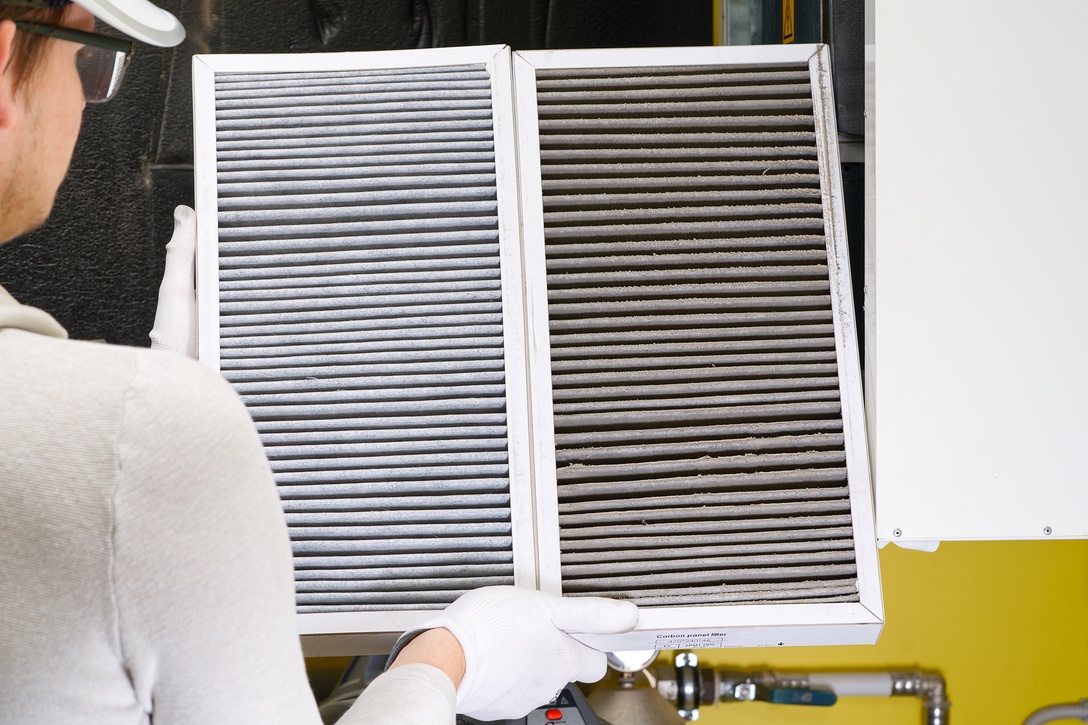Furnace filters help maintain your indoor air quality and the efficiency of your home heating equipment. Learn from our team at Lee’s Summit Heating & Cooling about how and when to change these filters so that you can keep your home warm and comfortable throughout the coldest months of the year.

The filters in your furnace play a key role in your HVAC system’s efficiency and your home’s indoor air quality. Below, our team of expert technicians at Lee’s Summit Heating & Cooling breaks down why your filters matter, how they work, and when to change or clean them to keep your home comfort equipment in great shape.
In addition to changing your filters regularly, you’ll want to schedule annual professional furnace tune-ups to maintain your heating equipment’s performance this winter. Book your tune-up with the link above, then read on to learn everything you ever needed to know about filters!

Why Furnace Filters Matter
Furnace filters are more than just meshed pieces of material—here’s what they do for your heating system:
- Maintaining Indoor Air Quality: Filters trap a variety of airborne particles such as dust, pollen, and even certain microorganisms. This ensures the air you breathe inside is clean and healthy. Learn more about improving your indoor air quality here.
- Protecting HVAC Components: Dust and debris can significantly hinder your HVAC system’s efficiency and can even damage its components over time. Furnace filters prevent these particles from infiltrating the system.
- Enhancing System Performance and Energy Efficiency: A clean filter allows for seamless airflow, which lets your furnace achieve the desired temperature more easily and reduces wear and tear. This not only prolongs the lifespan of your HVAC system but also ensures that energy is utilized efficiently, which can lower your monthly heating bills.

Different Furnace Filter Types Explained
Given the crucial role furnace filters play, it’s not surprising that there’s a variety of them available. Depending on your needs, here are some of the most common types:
- Disposable Fiberglass: Economical and disposable, these filters primarily protect the HVAC machinery but don’t offer high-quality air filtration.
- Pleated: More efficient than fiberglass, pleated filters have a greater surface area to trap particles. They come in different MERV ratings, which denote their filtration capabilities.
- Electrostatic: These filters generate a static charge to attract particles, making them highly efficient, especially for homes with smokers or pets.
- HEPA Filters: Considered the gold standard in filtration, HEPA filters can trap 99.97% of particles 0.3 microns in diameter, including many bacteria and viruses.
Here’s a comparison chart showing the main differences between these filter types:
| Estimated Cost | Lifespan | Bacteria & Particle Trapping | Maintenance Required | |
| Disposable Fiberglass | $4-$10 | 1 month | Larger particles, minimal bacteria | Replace monthly; discard after use |
| Pleated | $7-$40 | 3-6 months | Most common allergens, some bacteria (varies by MERV rating) | Replace every 3-6 months; discard after use |
| Electrostatic | $10-$100 (for some permanent models) | 1-4 months for disposable, 2-4 years for permanent | Smokers’ particles, pet dander, some bacteria | Disposable: Replace every 1-4 months; Permanent: Clean every month, replace every few years |
| HEPA Filters | $20-$100 | 6-12 months | 99.97% of particles 0.3 microns, including many bacteria and viruses | Replace every 6-12 months; discard after use |
Changing & Cleaning Your Furnace Filters
The general rule of thumb is to replace your furnace filter every 90 days. However, this can vary depending on:
- Filter Type: While a fiberglass filter might need a replacement every month, a high-quality pleated filter could last 3-6 months. HEPA filters have even longer lifespans, often up to a year.
- System Usage: If you use your HVAC system more frequently, you’ll need to change the filter more often.
- Pets & Allergies: Homes with pets or residents who suffer from allergies should consider more frequent replacements to ensure optimal air quality.
Unless you have a high-quality HEPA filter in your HVAC system, we recommend changing or cleaning the filter every month during the heating season. This will ensure that the air in your home is as fresh as possible and keep dust or other debris away from your heating equipment’s sensitive components.
Proper Filter Installation
Installing your furnace filter correctly is equally as important as choosing the right type. Here are some tips you can use to make sure you do it properly:
- Check the Airflow Direction: Most filters have arrows indicating the direction of airflow. Ensure these arrows point towards the furnace or blower motor.
- Ensure a Secure Fit: Make sure the filter fits snugly. An ill-fitting filter can lead to unfiltered air passing through, diminishing air quality.
- Inspect for Damage: Before installing, always check your filter for any damage or defects.

DIY vs. Professional Assistance
Changing a furnace filter is typically a straightforward process, and with the right knowledge, many homeowners can manage on their own. However, there are times when seeking professional assistance is wise:
- Complex Tasks: If you’re looking to upgrade your filter type or if you’ve never changed a filter before, consulting with a professional the first time is a good idea.
- System Evaluations: If you suspect your HVAC system isn’t operating efficiently or needs a checkup, it’s best to call in the experts.
Understanding the importance of furnace filters, knowing how to choose between the different kinds available, and following the right maintenance routine can all help you achieve optimal performance from your HVAC system. And if you’re struggling with anything related to maintaining your heating equipment, we’re here to help!
Our team at Lee’s Summit Heating & Cooling is always here to help our community stay comfortable throughout the year. Contact us now to book your next service to browse the FAQ below to learn more.
Furnace Filter FAQ
What are the signs that my furnace filter isn’t working properly?
If you notice reduced airflow from the vents, an unexpected increase in your energy bills, or a dusty atmosphere in your home, it may be an indication that your filter is clogged or not functioning properly.
Are there any health risks if I don’t change my filter on time?
Yes, using an old or clogged filter can adversely affect indoor air quality. This can potentially exacerbate allergies, asthma symptoms, or other respiratory problems due to the accumulation of pollutants. Additionally, a dirty filter may allow harmful microorganisms to enter the air in your home, posing further risks to your health.
What’s the difference between MERV ratings and why do they matter?
MERV stands for Minimum Efficiency Reporting Value. It’s a measure of a filter’s ability to capture larger particles between 0.3 and 10 microns. The higher the MERV rating, the more particles the filter can trap, improving the air quality. However, filters with very high MERV ratings may reduce airflow in some systems, so it’s essential to choose a filter that balances air quality with system performance. We can help you choose a filter with the correct MERV rating for your home and needs.
Can I wash and reuse my disposable filter to save money?
No, disposable filters are designed for single use and should be discarded after their effective lifespan. Washing or vacuuming them might seem like it cleans the filter, but it can damage the fibers and reduce its efficiency. If you’re interested in a reusable option, consider investing in a washable or permanent filter, which is designed to be cleaned and reused.


